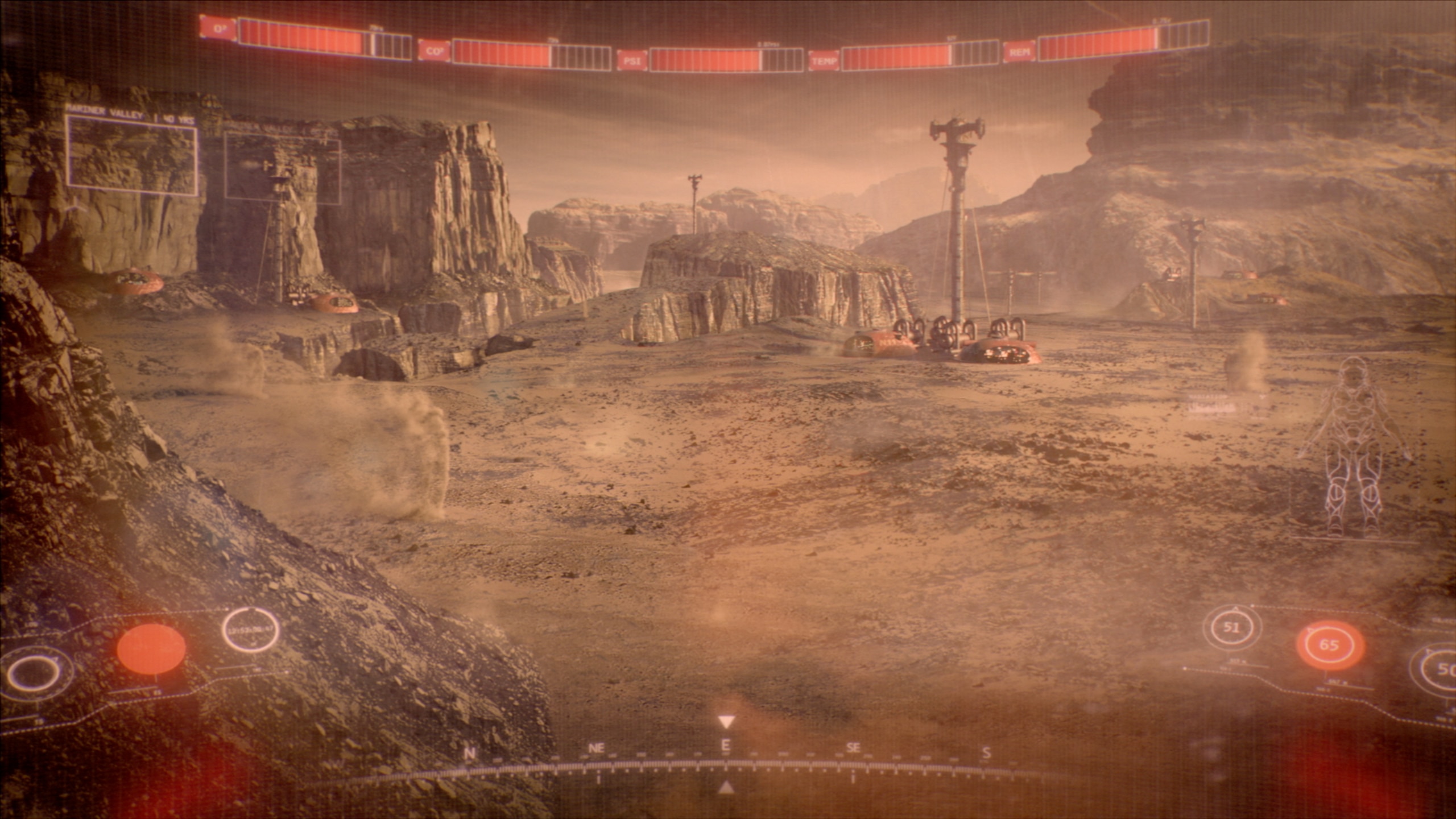Syfy Insider Exclusive
Create a free profile to get unlimited access to exclusive videos, sweepstakes, and more!
Sign Up For Free to View
Cheese Farts and Radiation: Get the Science Behind the Expanse
Obviously you have to read based on that headline.

The Expanse has been painstakingly crafted to be as scientifically accurate as possible, so we'd be doing the whole universe a disservice if we didn't call out all of the minutiae that make the show the most realistic look at the future we've ever seen. We sat down with Daniel Abraham, Mark Fergus, and Hawk Ostby, the co-creators and producers (Daniel is also 1/2 of the team that wrote the book series the show is based on) to get the lowdown on the insane level of detail and intricacy they put into the science we see in the show. But how real is it? Nerds, read on.
Q: In the first scene we see terraformed Mars. How long would it actually take to make another Earth on Mars?
Daniel Abraham: The biggest thing they have to deal with is the fact that Mars doesn't have an active magnetosphere. So, we see a little bit of what they're building. It's to protect Mars from the cosmic radiation that our magnetosphere protects us from. So, that's the first big thing. They're building something that will keep the solar wind and radiation from stripping off the atmosphere and irradiating everything on the surface. So they don't have to live in tunnels anymore. After that it's getting a functioning water table, getting a functioning heat cycle, getting all of those things that we take for granted here that allow for plant and animal life.
Mark Fergus: And specifically, that's what the ice hauler from Ceres is doing. That big supply of ice, which is being turned into oxygen, is then creating an atmosphere.
Hawk Ostby: That was the biggest thing for me, a guy who took one physics course maybe in his life, is this idea that ice actually is used create an atmosphere. It's such a cool image, to think of all this ice that they had scavenged from all over, that it's being fed into this system that is terraforming an entire planet.
Mark Fergus: It's very poetic and beautiful, and it also ties into the politics of the show. Where did they get that ice? From the Belters; they stole it basically. They live in domes and tunnels, because they don't have what the Earth takes for granted. That feeds the whole season, that conflict of trying to build a world that we've already destroyed and trashed.
Q: At the end of Season 1, Miller and Holden get a mega-dose of radiation. Then at the start of Season 2 they get a shot and they're healed? How realistic is that?
Hawk Ostby: Well, that's actually something we have devised and patented, so we can't talk a lot about that. [LAUGHS]
Mark Fergus: It's actually a lifelong condition. They need to monitor cancer now for the rest of their lives, because their bodies will be constantly reacting to the radiation. They are essentially on medication for the rest of their lives, which can control the situation in a way similar to how you control asthma, but it's a lifelong reminder that they're radiated.
Daniel Abraham: One of the things that we're going to have to figure out before we can accomplish efficient space travel and space exploration is radiation damage. It's omnipresent once you get outside of Earth's magnetosphere. That technology that will allow for expansion into the solar system, it's also the technology that we're showing here, and in this case it's managing radiation sickness poisoning.
Hawk Ostby: It's also one of the reasons we do not have windows in spaceships. That's a very bad idea.
Daniel Abraham: A window in a spaceship is just a constant laser blasting into a ship, causing radiation damage. Space is just a terrible place.
Mark Fergus: Those are the kind of details that we got excited about when we read the books and said, "This could be a show". It's the attention to those details that most science fiction just flits right over and says, "Oh, no technology solved everything, let's not get into any of those issues, because they're boring." We said, "No that stuff is fascinating. Let's double-down on those things, instead of skipping over them, because any obstacles to the human endeavor is drama. If radiation is a real problem let's lean into that."
Q: All right. Cheese farts. Is there a scientific basis to them being stinkier than normal farts? How more research did you guys do?
Daniel Abraham: [LAUGHS] Well quite a lot.
Hawk Ostby: Vermont cheddar. We mention that they use Vermont cheddar, and it absolutely produces the stinkiest farts.
Mark Fergus: Vermont cheddar, absolutely.
Daniel Abraham: If you really want to get all science-y about it, you can start talking about gut flora and micro biota, but Foods with high sulfur content get broken down by large intestinal bacteria into hydrogen sulfide. That's what smells. Vermont Cheddar, high sulfur content.
Hawk Ostby: Yeah, that's not my area. Cheese farts just sound potent to me.
Mark Fergus: Yeah, it sounds like something we would want to distance ourselves. [LAUGHS]
Want to dive deeper into The Expanse? Go inside Episode 1, or listen to The Expanse podcast where co-creators Daniel Abraham and Ty Franck are joined by Dominique Tipper to discuss the events of the first and second episode.
















